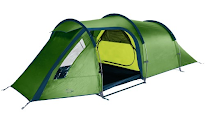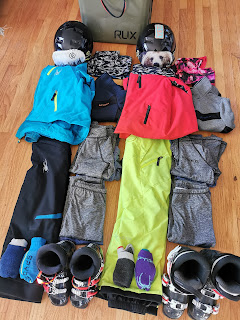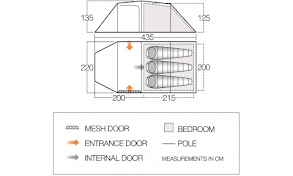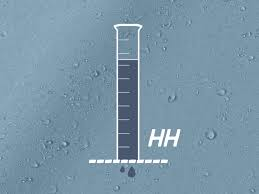Hopefully you've already checked out our posts on choosing a tent and sleeping systems. We thought we'd continue the gear recommendations with our ultimate kitchen set up for car (or boat) camping. These are our favourite bits of kit which make our camping experience so much easier - some may seem slightly dull, but when you need them they don't feel dull - they give us less worry, better ease of set-up and an organised camp (Ridley loves an organised camp!) and more time to enjoy what we are there for - the adventuring!
Family blog documenting our Outdoor Adventures in Canada and World Travel.
Tuesday 16 May 2023
Camping Kitchen Set Up
Friday 21 April 2023
Spring is here (hopefully)!
Well the ski season is over, at least on Vancouver Island, and it feels like Spring might actually be here. Hopefully it isn't another false Spring this time!
For us it's time to pack away the ski gear and make the transition into camping and boating. It's our last Spring/Summer in Canada before we head back to the UK and we've got lots of exciting adventures planned, so having our gear ready to go is important.
First up is pulling out the gear, and checking that everything still works. Our big tent needs to go into the shop to repair a tear (naughty dogs!), the boat outboard has just gone in for a spring service, and we're thinking about updating our old camping stove (stay tuned to hear what we end up with).
Next up is packing away the ski gear. We like to give our ski jackets and pants a wash and re-proof, and then make sure they are nice and dry before storing them until next season. The Techwash from Nikwax works great. Our skis will also go in for a tune up and a coat of summer wax to protect them until next season.
Spring is a transitional period for our activities, so keeping our gear organised and ready to grab is essential. Our RUX 70l are perfect for this, we have one in storage with our ski gear, one packed with the boys skating gear, one packed with our camp kitchen, and one on standby for whatever gear we might need that day.
The RUX App even allows you to build custom packing lists, and track the contents of each RUX with a QR code or NFC from your phone. Check them out at the link below!
Friday 10 February 2023
Ski Trip Packing List
We're heading off to Whistler shortly for Struan's birthday; what else would a soon to be 9 year old want to do for their birthday!
I've just been gathering all of our ski gear together for the trip, and packing it all up, so thought now would be a good time to put together a packing list. Nothing worse than getting to the ski hill or resort and realising you've left something essential behind.
What do I Need to Pack?
Ski Equipment
Lift Pass!
Skis *
Ski Boots * - be sure to get well fitted boots, they won't feel comfortable as such but shouldn't hurt, as the boys say they are 'ski boot comfy'. Badly fitted boots won't only ruin your day they can cause injury so spend time with your shop or hire store to be sure you have the right fit. We have also had Struan's boots heat fitted as his feet have grown and slightly changed size, but not enough for a new pair of boots so if your older boots start to pinch it is definitely worth doing. It didn't even cost us anything!
Poles *
* If you are travelling by air, or new to skiing you may want to rent this equipment at the resort.
Helmet - many resorts now (quite rightly) insist on helmets for kids, but with Sarah and I having a couple of accidents over the years, I think you'd be mad not to wear a properly fitting ski helmet. The picture below was taken shortly after an accident while wearing a helmet, it could have been so much worse without one.
Goggles - a well fitted pair of goggles makes a huge difference, skiing blind is not fun! Sarah struggles with goggles and opted for a helmet with a built-in visor but this proved problematic in very rainy or snowy conditions when the inside got wet. We are yet to hit on the ideal goggles for Sarah but if we find that elusive beast we will be sure to let you know!
Backpack - not essential, but really handy for carrying extra layers, snacks for the kids, water etc. I'd recommend a waterproof bag if possible - we really like our Seal Line Skylake Dry Backpack (and not just for skiing).
Ski Clothing
Ski socks - a decent pair of ski socks won't wrinkle up in your boots, and will keep your feet warm and comfortable. Avoid cotton!
Base layers - thermal base layers are one of the most important items of ski clothing. We're massive fans of merino wool for base layers; they're warm, comfortable, and naturally odour resistant! Icebreaker make a great range of thermals in various weights, and I'm a massive fan of my new BN3TH full length merino bottoms. (Use the link above for $15 off your first purchase.)
Mid layer - depending on where and when you are skiing, and the weather on the day, you may need more or less mid-layers. Quite often Innes and I don't bother with a mid layer, but Struan and Sarah almost always do. An extra thermal, fleece or hoodie, will work just fine. Like most outdoor activities, layering is key; so that you can add or remove layers as necessary. This is where that backpack comes in handy!
Outer Layers - Ski pants (trousers) / Salopettes / Bibs and a Ski Jacket; waterproof and breathable are the keys here. Outer layers designed for skiing also tend to be insulated for extra warmth. We're big Spyder fans, and although they're pretty pricey, they are really well made and long lasting. Their kid's range even has a 'grow with me' feature, which allows the cuffs and hems to be dropped as the kids grow.
Neck Warmer / Scarf / Buff - these contribute a lot more to keeping you warm than you would think; keeping the cold air from getting down your neck and also stopping snow from entering your jacket if you do take a head plant! We tend to use thinner Buffs on most days (which you can use in loads of different ways) and a thicker balaclava type when it's really cold.
Gloves - I recommend two pairs of gloves, a thin inner pair for warmth and a waterproof outerlayer.
Extras
There a few other bits and bobs that aren't essential, but can make life easier (or more fun), so we think they're worth adding to your ski trip packing list.
RUX - we love our RUXs, they're perfect for carrying all of this kit!
Go Pro - if you don't have video for your favourite social site did your ski trip even happen?
Radios - we find our Rocky Talkies to be invaluable for keeping in touch on the mountain without digging around in your pockets for your phone. We generally give one to Struan, so when he bombs off without us we can find him again!
Re-usable Water Bottle - we're all about reducing unnecessary plastic waste and if you've read any of our other posts, you'll know it has to be Yeti!
Flask - the boys love a hot chocolate to warm up, but often they come in giant servings, pop any left overs in the Yeti for later! Also handy for your morning coffee fix while waiting in the ski lift queue.
Toe / Hand Warmers - sometimes these are necessary, especially if you are 'skiing the East', like we used to when we lived in Ottawa.
Carry Straps - the boys got these straps for Christmas from Sarah's cousin, you wouldn't believe the number of arguments they have saved about the boys carrying their own skis. Highly recommended, in fact i'm not sure why we don't have them too!
GoggleSoc - ski goggles can be expensive, protect your lenses from scratches with these great covers made from recycled bottles. They also look cool.
Apres Ski
Canadian ski resorts are pretty relaxed, so you don't need much in the way of special clothing, you may just stay in your ski gear! There are a few items worth adding to the list though.
Snow Boots - you probably won't want to wear your ski boots all day, so a warm pair of boots are great for heading down to the local bar or restaurant.
Toque (Hat) - a warm hat is handy for the evenings, although you can just re-purpose your Buff.
Sun Glasses (and Sunny Soc) - if you're partaking in some lunchtime or early afternoon apres, you may not want to wear your googles, but it can be bright on those patios!
Swim shorts / suit - if you're lucky enough to have a pool or hot tub for some apres ski relaxing.
Printable Ski Trip Packing List
Wednesday 9 November 2022
Camping Christmas?
Is it too early to talk about Christmas???
Sarah says no, so here we go!
We've put together a list of some of our favourite camping gear that we take on our adventures. Everything on this list is actual equipment that we own and use regularly, so please don't think this is our Christmas wish list, it is just an easy way of us getting our recommendations to you - also don't feel you need to use Amazon, please go and support your local camping/outdoor stores if you can.
All of these 'little' bits make our camping experience so much easier - some may seem slightly dull, but when you need them they don't feel dull - they give us less worry, better ease of set-up and an organised camp (Ridley loves an organised camp!) and more time to enjoy what we are there for - the adventuring!
PS. Having found this photo online, Sarah now feels there's a Christmas Camping challenge to be had, who's up for it?!?
PPS. Couldn't get our favourite radios to add to the Amazon list - so try here.
Friday 14 October 2022
Tent Camping Sleep Systems
So, now you've chosen your tent (see previous post), you may be wondering what else you need for a successful camping trip.
After your tent, the next most important thing is your sleeping system. Generally this consists of something to keep you insulated from the ground and something to keep you warm. Most campers opt for some kind of sleeping mat and a sleeping bag.
Sleeping Mats
Sleeping Bags
Rectangular Rounded Mummy
Roomy Moderately roomy Close fitting
Cheaper Mid price range More expensive
Bulky to pack Lighter and more compact Very light and compact
Summer use only Suited for 2/3 Season use Best for 3/4 Season useCamping Pillows
Thursday 22 September 2022
Choosing a Tent
Choosing a tent can be confusing; there is a huge range of tents available, with different styles, features and prices. Here's some guidance on what we look for in a tent.
Tent Size
This is the first decision you need to make. Are you looking for a solo backpacking tent for one, or a large family tent that can sleep 6 (or even 8-10) with a separate living room?
Tent manufacturers generally include the recommended number of people that the tent can sleep in the name of the tent. For example our Omega 350 is officially a 3-person tent (with a bit of extra room - hence the 50), while our larger family tent sleeps 5 and is known as the Icarus 500. Most online tent retailers will let you filter your search results by sleeping capacity, and this will usually be the first question a salesperson in store will ask you, so start here. If you want a little more space you can always go up in size by one or two above your actual numbers.
Bear in mind that a smaller tent will warm up faster, and stay warmer over night, due to body heat, so if you think you will be camping in the cooler shoulder seasons, you may want to choose a smaller tent. Some of the National / Provincial Park sites are also too small for our biggest tent.
Intended Use
Once you've decided on the number of people you want to sleep, the next consideration is what you plan to use the tent for. Your intended use will determine the style of tent and let you focus on weight and packed dimensions. If you plan to only use the tent for 'Car Camping', where you drive right up to your pitch, then you can afford to go for a bigger and heavier tent, which will likely give you more space and probably greater head room. If your plan is to backpack, or bikepack, carrying all of your camping equipment with you, then you will obviously be more interested in a compact packed size and lightweight tent.
This is how we've ended up with 4 tents! A large family tent with living room for car camping, a medium size tent for boat camping or walk-in sites, a lightweight backpacking tent which all four of us can just about squeeze into, and an even lighter 2-person backpacking tent.
Weather conditions
Depending on where you live, and how dedicated you are to camping, weather may be important to you or not. As our camping has been in the UK, Ontario, and British Columbia we always expect rain!
A tent's water resistance is usually measured as Hydrostatic Head or HH. This is the height of a static column of water which the material of the tent can withstand before leaking. Usually measured in millimetres, the higher the number, the more waterproof your tent will be. For reference our Omega 350 has a rating of 5000 mm HH, which is one of the highest ratings from Vango.
Strong winds are another factor we always consider. A good tent will have plenty of guy (or guide) ropes for additional stability. The Vango tents also have an internal Tension Band system, which consists of additional bracing straps inside the tent which can be deployed in strong winds.
It's not all strong winds and rain though! Ventilation is a key factor in tent design, not only in hot sun but also to prevent condensation build up inside the tent. Mesh openings in doors can allow improved air flow, while keeping out the bugs, and I always look for at least two vents in the outer flysheet for through flow.
Many modern tents now come with blackout bedroom areas which not only allow you to sleep longer in the morning by blocking out some of the light, but can also help to keep the temperature down inside the tent.
Other Features
As we always expect rain, we only consider tents which are erected with the outer flysheet first. In many tents the poles are fitted to the inner part of the tent first, and then the flysheet is added over the top. We don't like this design; if you are putting the tent up in the rain there is no way to avoid the inner tent getting wet. Most tents which are fly first, also allow you to leave the inner tent connected making them faster to put up. The only advantage we can see to an inner first design, is that you could leave the flysheet off in very warm weather, if you are confident it's not going to rain!
A sewn in ground sheet is essential for us, at least for the bedroom area. The ground sheet should also extend up the lower sides of the inner tent, sometimes known as a bathtub groundsheet. This keeps the bedroom area dry and bug free. Look for a higher HH rating in your groundsheet. On a recent trip to Bon Echo Provincial Park in our large family tent there was a huge thunderstorm overnight. We woke in the night to find our bedroom area floating like a water bed! Our groundsheet had a HH of 10,000mm though so we remained completely dry. When we got up in the morning we were the only tent left in what had been a full Provincial Park.
We prefer a tunnel tent design, rather than a dome. You tend to get a much larger porch area to keep your bags and shoes dry in a tunnel tent, plus you can align a tunnel into the prevailing wind to maximise strength.
Comparison - Vango Omega 350 vs MSR Elixir 3
As a quick example of choosing a tent, here's a comparison between the 3-person tent we use and a comparable tent available on the Canadian market.

|
|
Vango
Omega 350 |
MSR
Elixir 3 |
|
Sleeping Capacity |
3/4 |
3 |
|
Erection |
Fly first |
Inner first |
|
Rainfly HH |
5000 mm |
1500 mm |
|
Floor HH |
6000 mm |
3000 mm |
|
Packed Weight |
4.25kg |
3.19 kg |
|
Packed Dimensions |
49 x 20 cm |
51 x 20 cm |
|
Floor Area |
4.3 sqm |
3.67 sqm |
|
Vestibule Area |
~3.8 sqm |
2.22 sqm |
|
Cost |
£240 ($360) incl tax |
$400 (£260) + tax |
We are massive fans of Vango tents, so much so that when we were looking for a larger family tent we had Sarah's parents post us one from the UK. Hopefully you can easily see from the specifications above why we choose Vango.
Which would you choose?
























